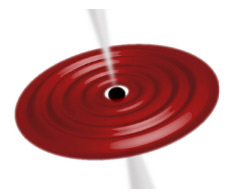Lessons Overview : The Death of Stars
Stars can be classified based on their color, size, mass, temperature, intensity, and luminosity. Different types of stars, in addition to their different physical characteristics, also end their lives in drastically different ways.Most stars, those with masses similar to the Sun's, burn up all of their fuel and collapse into white dwarves. Once white dwarves radiate off all of their heat, they cool into black dwarves.
Stars with eight to fifteen times the mass of the Sun explode into space when they die, leaving only a small, dense core of material. This explosion is called a supernova, and the remaining core is a neutron star. The core is so dense that all of the protons and electrons inside it combine to form neutrons. Some neutron stars are pulsars, which we will discuss in greater detail in the next section.
Stars with masses greater than fifteen times the mass of the sun explode as supernovas, but then continue to collapse past the neutron star stage. These stars collapse down to a black hole, a point in space with such extreme density and gravitational pull that nothing, not even light, can escape its attraction. As matter gets pulled into the black hole it can emit radiation. Radio astronomers are able to observe this radiation and, from it, can learn about the processes occurring near black holes. Unfortunately, we can never make empirical observations to learn about the interior of a black hole because no radiation escapes from it.
The remnants of a supernova explosion often form nebulae where new stars are born and the life cycle of a star begins anew.

A black hole surrounded by an accretion disk of infalling matter and emitting twin jets of energetic particles.